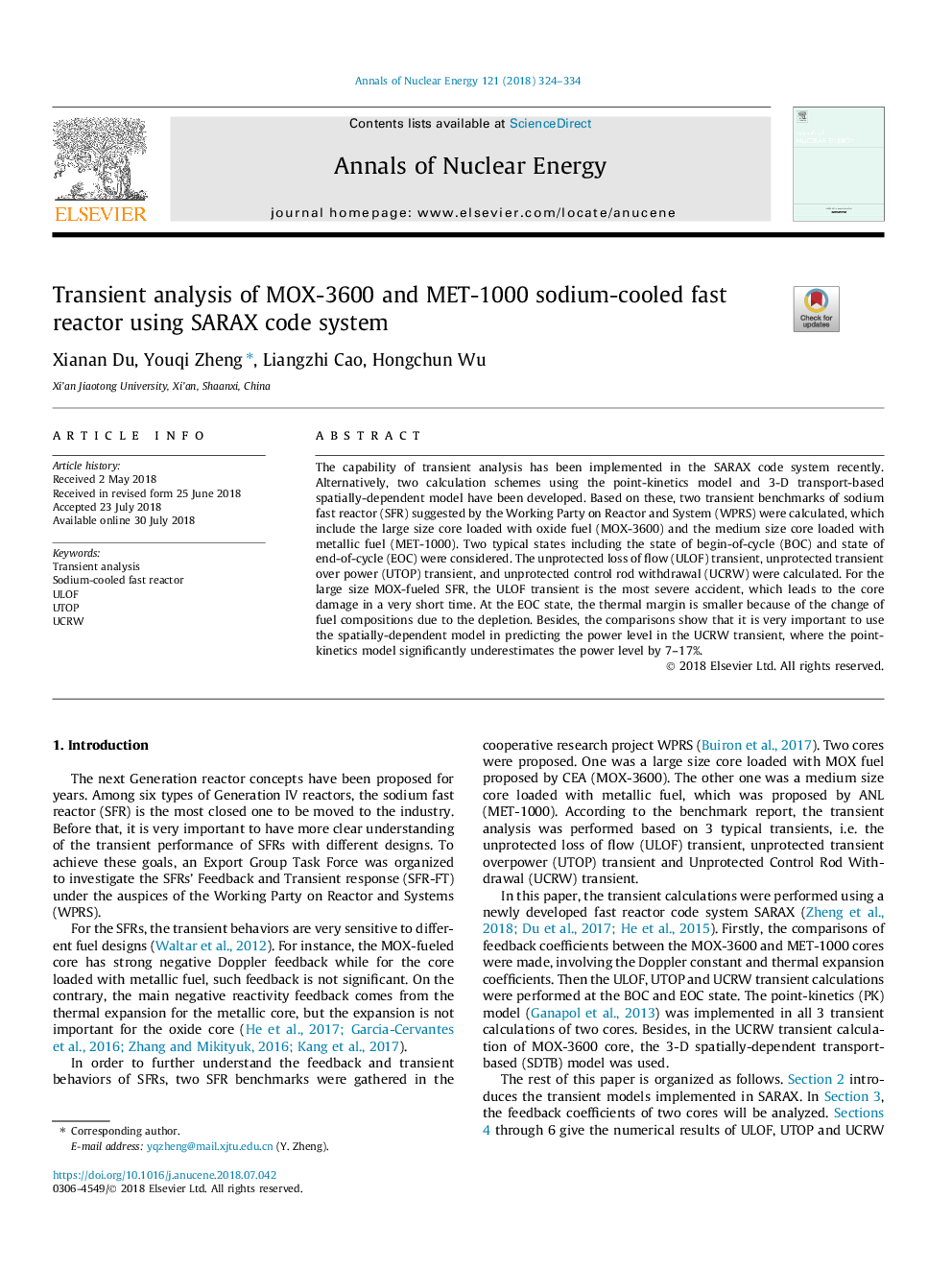| Article ID | Journal | Published Year | Pages | File Type |
|---|---|---|---|---|
| 11007334 | Annals of Nuclear Energy | 2018 | 11 Pages |
Abstract
The capability of transient analysis has been implemented in the SARAX code system recently. Alternatively, two calculation schemes using the point-kinetics model and 3-D transport-based spatially-dependent model have been developed. Based on these, two transient benchmarks of sodium fast reactor (SFR) suggested by the Working Party on Reactor and System (WPRS) were calculated, which include the large size core loaded with oxide fuel (MOX-3600) and the medium size core loaded with metallic fuel (MET-1000). Two typical states including the state of begin-of-cycle (BOC) and state of end-of-cycle (EOC) were considered. The unprotected loss of flow (ULOF) transient, unprotected transient over power (UTOP) transient, and unprotected control rod withdrawal (UCRW) were calculated. For the large size MOX-fueled SFR, the ULOF transient is the most severe accident, which leads to the core damage in a very short time. At the EOC state, the thermal margin is smaller because of the change of fuel compositions due to the depletion. Besides, the comparisons show that it is very important to use the spatially-dependent model in predicting the power level in the UCRW transient, where the point-kinetics model significantly underestimates the power level by 7-17%.
Related Topics
Physical Sciences and Engineering
Energy
Energy Engineering and Power Technology
Authors
Xianan Du, Youqi Zheng, Liangzhi Cao, Hongchun Wu,
